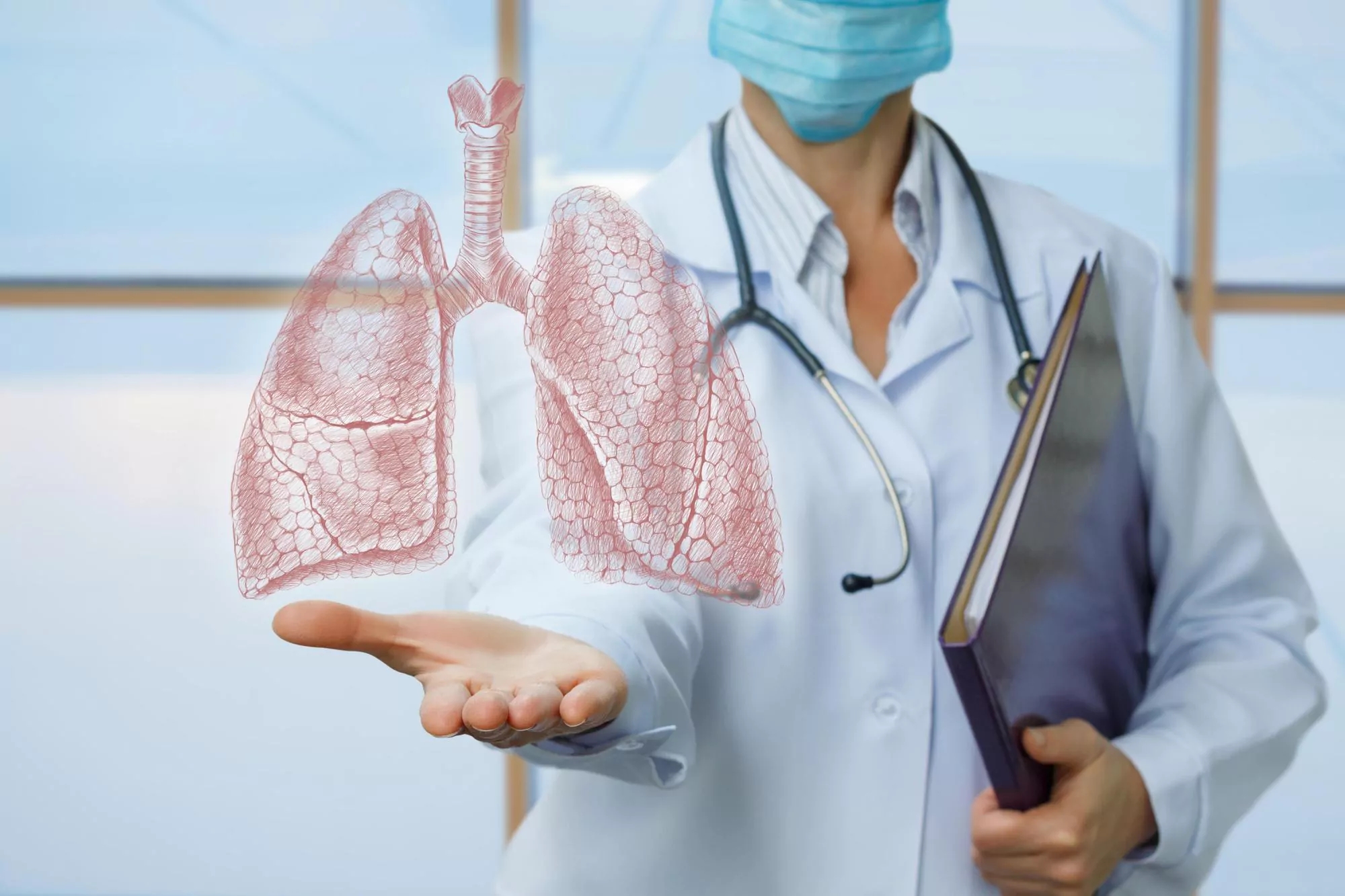Abstract
This comprehensive review delves into the intricacies of mitochondrial bioenergetic dysfunction and its correlation with pulmonary diseases. The spotlight is placed on elucidating the molecular mechanisms underlying this association, as well as highlighting the critical challenges and future research directions in this rapidly advancing field. The article presents a detailed examination of the pathogenic processes that impair mitochondrial energy metabolism within lung tissue, potentially revolutionizing the therapeutic approach to various lung disorders.
Introduction
Mitochondria, often referred to as the cellular “powerhouses,” play a pivotal role in energy generation through oxidative phosphorylation. The finely tuned bioenergetic processes within mitochondria ensure an adequate supply of Adenosine Triphosphate (ATP) to meet the metabolic demands of the cell. However, perturbations in mitochondrial function can precipitate a cascade of physiological imbalances, implicating these organelles in a multitude of diseases, including pulmonary disorders.
A wealth of research has begun to unravel the implications of mitochondrial bioenergetics on lung health. This article synthesizes our current understanding, as detailed in a seminal review (DOI: 10.1016/j.prrv.2019.04.001) published in “Paediatric Respiratory Reviews” by Ten Vadim S and Ratner Veniamin V., as well as subsequent studies that have advanced this field. The dual role of mitochondria in both energy production and regulation of reactive oxygen species (ROS) positions them centrally in the pathophysiology of various lung diseases, from asthma and bronchopulmonary dysplasia to pulmonary hypertension and acute respiratory distress syndrome (ARDS).
Mitochondrial Dysfunction and Lung Diseases
Recent insights have underscored the multifaceted impact of mitochondrial dysfunction in lung pathologies. For instance, the inhibition of the mitochondrial respiratory chain and the resulting energy crisis can severely compromise pulmonary cell viability and function. Mitochondrial leak and uncoupling, a process in which protons bypass ATP synthase, can lead to inefficiencies in energy production and exacerbate oxidative stress.
Furthermore, alterations in mitochondrial calcium handling can disrupt the delicate calcic equilibrium necessary for optimal mitochondrial activity. The heightened generation of ROS within the mitochondria further compounds these detrimental effects, damaging cellular components and instigating inflammatory pathways (Cloonan et al., 2016; Piantadosi & Suliman, 2017; Aravamudan et al., 2013).
Acute Lung Injury and Respiratory Distress Syndrome
Acute lung injury and ARDS exemplify conditions where mitochondrial bioenergetic failure is central to disease pathogenesis. These states of respiratory compromise can stem from hyperoxia, infection, or mechanical ventilation, each of which can induce mitochondrial dysfunction (Shepard et al., 1980; Kiefmann et al., 2017). The disruption of mitochondrial integrity and ATP generation impairs the surfactant production vital for lung function, leading to alveolar collapse and respiratory failure (Hallman et al., 1989; Guidot & Brown, 2000).
Bronchopulmonary Dysplasia
Bronchopulmonary dysplasia, a condition frequently affecting preterm infants with oxygen therapy exposure, has been linked to mitochondrial maladaptation. In these cases, mitochondria display altered morphology and function, which is thought to contribute to inadequate alveolar development (Ratner et al., 2009). Nutritional strategies aimed at enhancing mitochondrial activity offer potential benefits in preventing and mitigating this chronic lung disease (Atkinson, 2001; Frank & Sosenko, 1988).
Pulmonary Hypertension
Compelling evidence highlights mitochondrial dysregulation as a catalyst for pulmonary hypertension, a condition characterized by vascular remodeling and elevated pulmonary arterial pressure. Mitochondrial dysfunction favors a glycolytic rather than oxidative metabolism within pulmonary arterial smooth muscle cells, driving cell proliferation and resistance to apoptosis (Rafikova et al., 2015; Paulin & Michelakis, 2014). This metabolic shift and ROS production initiates and perpetuates the pathological remodeling of the pulmonary vasculature.
Future Directions
Progress in understanding mitochondrial bioenergetics in pulmonary disease has opened avenues for innovative therapeutic interventions. Pharmacological agents targeting specific pathways of mitochondrial dysfunction hold promise for disorders like ARDS and pulmonary hypertension. Furthermore, techniques that safeguard mitochondrial integrity under stress—such as hypothermia or hypoxia preconditioning—garner interest for their protective properties (Beurskens et al., 2012; Kim et al., 2016).
Stem cell-based therapies, especially those employing mesenchymal stem cells (MSCs) with their ability to donate healthy mitochondria to damaged cells, provide an exciting therapeutic option (Jackson et al., 2016; Islam et al., 2012). Research into mitochondrial antioxidants also offers potential pathways for mitigating oxidative stress-associated damages in lung disorders (Severina et al., 2013).
Challenges and Considerations
Mitochondrial targeted therapies face considerable challenges. Precise delivery methods that ensure the accumulation of therapeutic agents within mitochondria without affecting other cellular components are necessary for success. Furthermore, the complex interplay between different cellular processes and mitochondrial function necessitates a deeper understanding to avoid unintended consequences.
Conclusion
The role of mitochondrial bioenergetics in pulmonary dysfunction presents a complex yet intriguing puzzle. The last decade has witnessed significant strides in elucidating the molecular underpinnings of this relationship. As we continue to unravel the multifaceted interactions between mitochondria and pulmonary health, the promise for novel therapeutic approaches grows, potentially heralding a new era in the management of lung diseases.
DOI
The based review for this discussion: 10.1016/j.prrv.2019.04.001
References
1. Aravamudan B, Thompson MA, Pabelick CM, Prakash YS. (2013). Mitochondria in lung diseases. Expert Rev Respir Med, 7(631-646). PMC3977638.
2. Schumacker PT, Gillespie MN, Nakahira K, Choi AM, Crouser ED, Piantadosi CA, Bhattacharya J. (2014). Mitochondria in lung biology and pathology: more than just a powerhouse. Am J Physiol Lung Cell Mol Physiol, 306(L962-974). PMC4042189.
3. Cloonan SM, Choi AM. (2016). Mitochondria in lung disease. J Clin Invest, 126(809-820). PMC4767339.
4. Piantadosi CA, Suliman HB. (2017). Mitochondrial Dysfunction in Lung Pathogenesis. Annu Rev Physiol, 79(495-515).
5. Jackson MV, Morrison TJ, Doherty DF, McAuley DF, Matthay MA, Kissenpfennig A, O’Kane CM, Krasnodembskaya AD. (2016). Mitochondrial Transfer via Tunneling Nanotubes is an Important Mechanism by Which Mesenchymal Stem Cells Enhance Macrophage Phagocytosis in the In Vitro and In Vivo Models of ARDS. Stem Cells, 34(2210-2223). PMC4982045.
Keywords
1. Mitochondrial bioenergetics
2. Pulmonary dysfunction
3. Lung disease treatment
4. Oxidative stress in lungs
5. Mitochondria-targeted therapies
